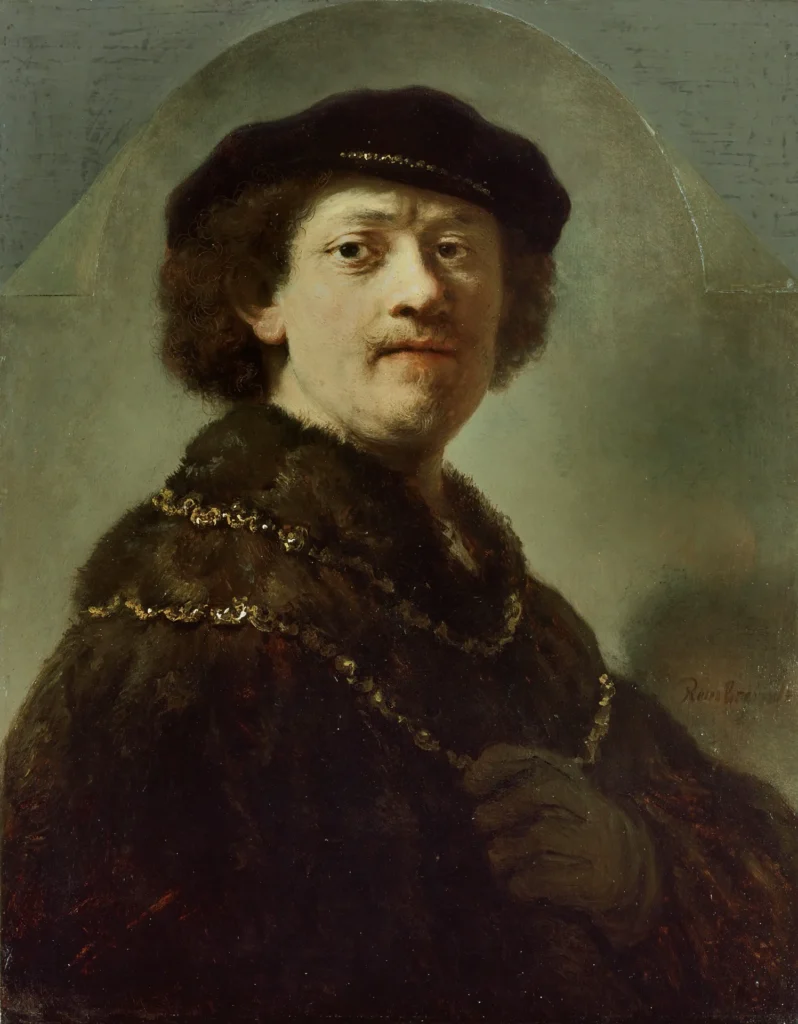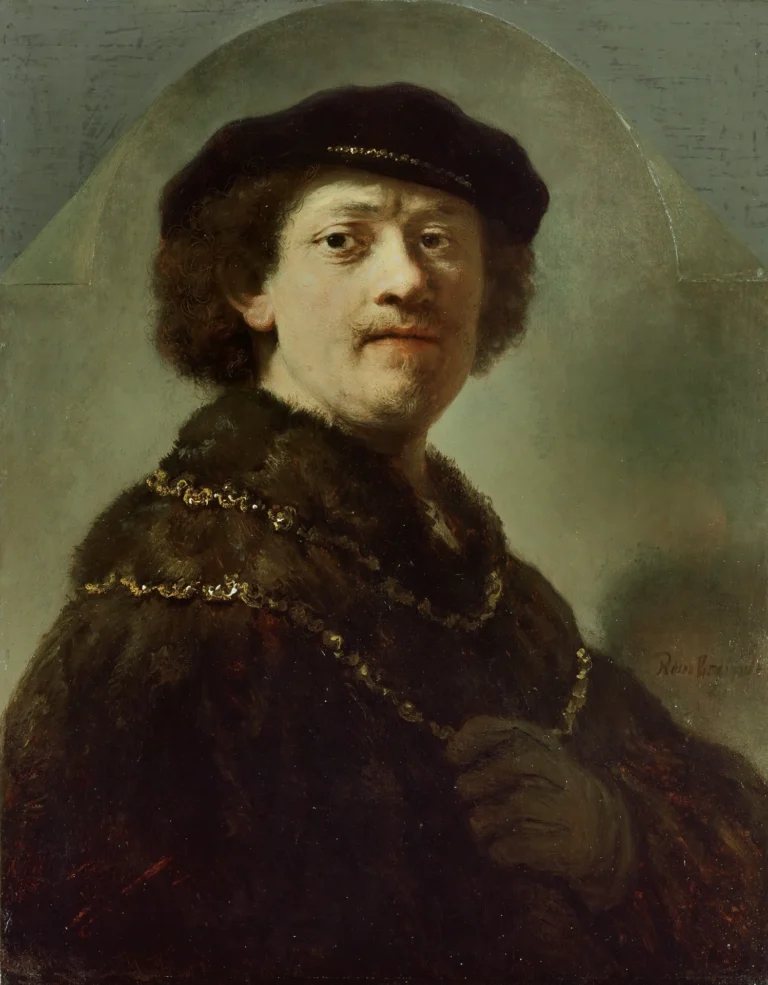Self-Portrait II of Rembrandt Van Rjin
Throughout his prolific career, Rembrandt van Rijn created numerous self-portraits that chronicle his evolution as an artist and individual. His self-portraits, spanning from his youthful exuberance to the introspective works of his later years, provide profound insights into his psychological state and personal experiences, particularly during difficult times, such as financial failure. For example, his 1659 self-portrait reveals a man who, despite external adversity, maintains a dignified presence, showcasing the masterful play of light and shadow that defines his later style.
1620 - 1660
About the Artwork
Rembrandt's journey through self-portraiture reflects more than just a series of painted images; it is a profound exploration of identity, time, and emotion. Beginning as a confident young artist in his early years, he embraced a range of styles and expressions, revealing a playful artistic spirit. As he matured, his works began to mirror his experiences, including financial hardships and personal losses. The self-portrait of 1659 stands out as a pivotal piece, embodying an artist who has weathered life's storms yet retained his strength and dignity. It captures not just a likeness but a deep emotional resonance, inviting viewers to connect with the man behind the canvas.
Did You Know
Rembrandt is renowned for his innovative use of chiaroscuro, the interplay of light and shadow, which became a defining characteristic of his style and added dramatic depth to his self-portraits.
Unlike many artists of his time, Rembrandt’s self-portraits convey an emotional spectrum, illustrating not just his outward appearance but also his inner struggles and mature reflections on life, particularly in his later works.
Rembrandt’s self-portraits serve as a personal diary that reflects significant events in his life, from early successes to personal tragedies, allowing viewers to trace his evolving identity through art.
Liked what you see? Add it to your collection.
Enjoyed reading? Share it.
... continued
Chronological Development
Rembrandt's self-portraits span his entire career, reflecting his growth from a young artist to an older man. Early self-portraits, such as Rembrandt Laughing (1628) and Self Portrait at An Early Age (1629), show him as a confident and ambitious young man. These works often feature him in various costumes and expressions, showcasing his artistic experimentation and playful spirit.Medium and Technique
Rembrandt created self-portraits in various mediums, including oil paintings, etchings, and drawings. His oil paintings, such as the Self-Portrait of 1659, are notable for their rich and expressive use of light and color. The etchings, like Self Portrait Drawing at a Window (1648), provide a more informal and spontaneous glimpse into his life.Psychological and Biographical Insights
Many of Rembrandt's self-portraits offer insights into his psychological state and life events. For example, the Self-Portrait of 1659, painted after he had suffered financial failure and personal losses, shows him with deep-set eyes that convey inner strength and dignity. This period of his life is marked by works that reflect his struggles and aging.Specific Examples
Early Period: Works like Rembrandt Laughing (1628) and Self Portrait in a Cap, Open Mouthed (1630) are from his early career and show his youthful energy and artistic experimentation.
Middle Period: The Self-Portrait of 1640, wearing a costume in the style of over a century earlier, and the Self Portrait of 1652, where he wears his working clothes, highlight his changing status and artistic evolution.
Late Period: The Self-Portrait of 1659 and Self Portrait at the Age of 63 (1669) are examples of his later works, characterized by a more introspective and emotionally charged portrayal of his aging and life experiences.










